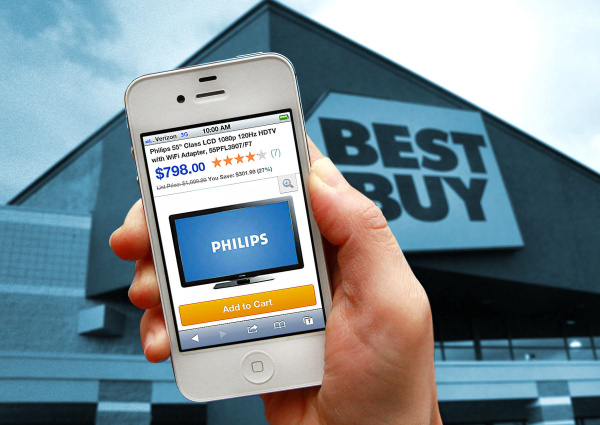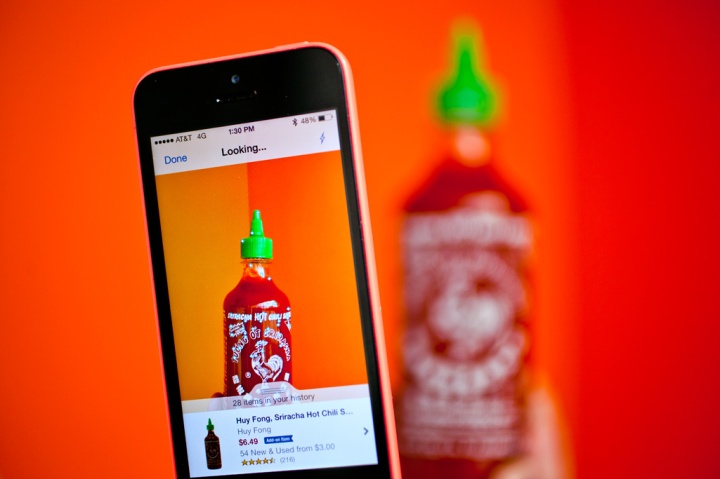They come in store and later buy online… sometimes from competitors. They are the Showroomers, these customers that have been drawing a lot of attention from the media recently. With online stores stealing away retailers’ sales, some companies took a rather radical approach, and removed some products from their brick-and-mortar stores altogether, as did Target with the Kindle reader. “What we aren’t willing to do is let online-only retailers use our brick-and-mortar stores as a showroom for their products and undercut our prices”, the retailer giant wrote, in a letter to its vendors. Other retailers find clever ways to leverage these showroomers, and make a hefty profit in the process. One thing is certain: the mobile is disrupting the retail pricing strategies.
The Showrooming Trend
Selling isn’t what is used to be. Clients now come in trendy stores like Nordstrom and Bloomingdale’s bargaining for prices, based on what they’ve been able to gather online. The trend is so popular in fact that the New York Times even mentions companies are starting to train their employees in order to better respond to customers’ haggling. In most cases, it also turns out that engaging in bargaining upon customer request is actually corporate policy.
DealScience, the online deals comparison tool, even noted back in 2013 that many stores had best-price guarantees even though sometimes not advertised. Better yet, some companies such as Air Canada, Best Buy, Home Depot and Lowe’s carry policies not only to match the price but also to beat it – using discounts when users find a better deal. Other companies find ways to keep the prices while luring in the customer who has found a better deal elsewhere by offering add-on benefits at no cost, such as insurance, free delivery or free installation.
Amazon’s Direct Attack to Brick-and-Mortar
Half of the showroomers who buy online do so directly on Amazon. No other online store collects more than 5% of business, so this is the clear winner of the retail wars with the web. Riding this trend, Amazon has issued two apps in the last two years, the first one being the price checker, which gives the user up to 15$ discount on items found in stores, and, more recently, the Flow app, released this January 2014, which combines augmented reality to give you the information you want regarding any in-store item you take a picture of. This app threatens to turn retailers into nothing more than showrooms for users.
Other online threats have since appeared, not only in the travel industry, where bargaining tools such as Hot Wire and Priceline are well known, but also in the everyday consumer products. Companies like Greentoe.com and ebay have been seizing that share of the market which is ready to bargain online to find the best deals.
New Business Models Emerging
Retailers’ answers to the phenomenon have been diverse. In some cases, mainly in the US and Australia, some retailers have started imposing a 50$ fee to try clothes in their stores, in an effort to clear off showroomers from their brands. More often than not, however, retailers have found that working with showroomers, as opposed to against them, proved more lucrative.
Marks & Spencer is one of many stores to provide free wifii in store, helping the user leverage their experience with the brand online, on their app and in-store for a seamless omni-channel experience. Some stores leverage their free wifii offering by populating the home page appearing upon login with their in-store deals. Others go a step further, integrating new technology such as iBeacons, to lure customers in.
Electronics store Best Buy focused on its staff: putting a new system in place called 360pi, and its mobile companion, 360mobile, it enables sales people on the floor to quickly access accurate information on sales prices of online competitors, effectively enabling them to engage with consumers and turn the showroomer into an in-store purchaser.
Nordstrom took a novel approach by having an in-store app using the most popular pins on Pinterest appear on screen with details for in-store purchase. This is an excellent example of how retailers can use consumer’s engagement with online platforms, and transform it into non-costly customer research.
In the UK, a new concept entirely may soon be emerging: plans for the Silvertown Quays involve offering big brands such as Apple, Burberry and Nike large spaces for displays in stores where users can watch, compare, but not buy. A less extreme version of this has already appeared under the form of Box Park Shoreditch, where Nike, Puma, Vans and X-Box have built micro-sites in containers, containing only a small sub-set of their products onsite – but very knowledgeable staff who know all there is to know on the full line of products available on their online store or at flagship stores. These mini-stores have proved very useful in helping inspire customers, and bridge the gap between the real-world and online shopping experience. By holding so little stock (the containers are fairly small compared to a full-size store), the focus is on the experience rather than on the products, and acts as a teaser.
A Trend Here to Stay?
Although Showrooming is causing many retailers to worry, the newest statistics have shown the opposite behaviour, dubbed “Reserve Showrooming” to be more popular with the millennials – the age group with the biggest financial growth potential over the next few decades.
Specialists also point out that one thing online stores will never be able to reproduce is the instant gratification of walking out of a store with your new purchase in-hand. In fact, studies showed that 86% of consumers who chose to shop in-store rather than online find the ability to immediately take the item home with them a big benefit. In addition, 83% of them find that avoiding the hassle to return online to find the product and dealing with shipping and other steps involved in the online purchasing experience is also a factor that determines them to shop in-store, rather than online.
For the moment, however, showrooming remains a concern that retailers cannot simply wait on to act.
Sources:
http://www.businessinsider.com/millennials-as-reverse-showroomers-2014-5
http://adage.com/article/global-news/u-k-retailers-embrace-showroomers/243139/
http://risnews.edgl.com/retail-news/Best-Buy-Canada-Converts-Showroomers-into-Buyers87811
http://mashable.com/2013/04/16/showrooming-infographic-4-16/



